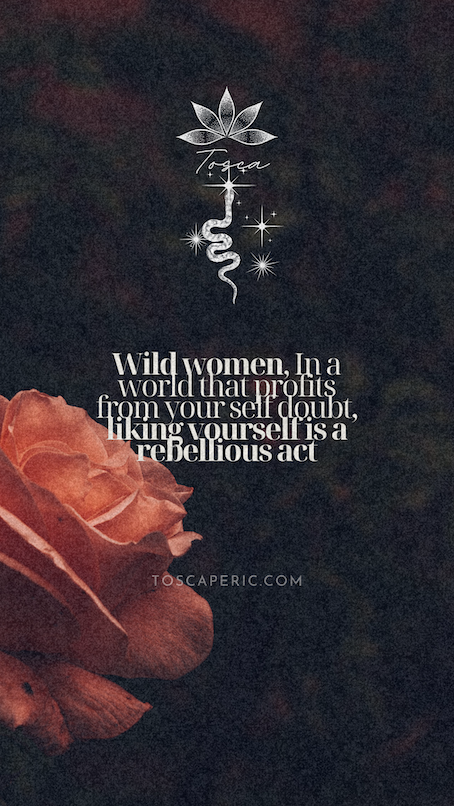I am Tosca
Welcome Goddess!
Kundalini Power is a concept rooted in ancient Indian spiritual traditions, particularly within the practices of yoga and Tantra. It is described as a dormant spiritual energy residing at the base of the spine, symbolized as a coiled serpent. Awakening Kundalini is believed to unlock profound personal transformation, heightened awareness, and spiritual enlightenment.
Origins and Significance
The term “Kundalini” is derived from the Sanskrit word “kundal”, meaning “coiled” or “circular.” According to yogic philosophy, Kundalini represents latent spiritual energy within every individual. This energy is said to lie dormant in the muladhara chakra (root chakra) until it is awakened through disciplined spiritual practice.
In many traditions, Kundalini is considered the primal life force (shakti), representing the feminine aspect of divine energy. It is the counterpart to the masculine consciousness (Shiva), and their union in the higher chakras is symbolic of enlightenment and cosmic unity.
The Chakras and Kundalini
Kundalini energy is believed to travel upward through the sushumna nadi (central energy channel) along the spine, passing through seven major chakras. Each chakra represents a specific level of consciousness and aspects of human experience:
Muladhara (Root Chakra): Grounding, survival, and stability.
Swadhisthana (Sacral Chakra): Creativity, emotions, and sexuality.
Manipura (Solar Plexus Chakra): Willpower, confidence, and personal power.
Anahata (Heart Chakra): Love, compassion, and balance.
Vishuddha (Throat Chakra): Communication and self-expression.
Ajna (Third Eye Chakra): Intuition and higher perception.
Sahasrara (Crown Chakra): Spiritual transcendence and connection to the divine.
The ultimate goal of Kundalini awakening is the harmonization of all chakras, culminating in the activation of the crown chakra, which connects the practitioner to universal consciousness.
Awakening Kundalini
Kundalini awakening is a profound spiritual event, often achieved through methods like:
Yoga and Asanas: Specific poses, particularly in Kundalini Yoga, help stimulate and align the chakras.
Pranayama (Breath Control): Techniques like Nadi Shodhana or Kapalabhati help channel energy through the nadis.
Meditation: Focused awareness on the chakras or mantras can awaken Kundalini.
Mantras and Chanting: Vibrational sounds, like chanting “Om” or “Sat Nam,” are used to harmonize the energy field.
Tantric Practices: Advanced techniques involving visualization and rituals.
Awakening Kundalini is often described as a sensation of heat or energy rising along the spine, accompanied by heightened awareness, bliss, or even temporary discomfort as energy clears blockages in the chakras.
Benefits of Kundalini Awakening
When Kundalini energy flows freely, it is said to bring about:
- Spiritual Enlightenment: A sense of unity with the cosmos and profound inner peace.
- Increased Awareness: Greater perception and understanding of oneself and the universe.
- Healing and Vitality: Physical and emotional blockages are cleared, enhancing overall health.
- Creativity and Intuition: Enhanced imaginative and intuitive capacities.
Challenges and Precautions
Kundalini awakening is powerful and not without risks. An unprepared mind or body may experience difficulties such as:
- Emotional instability or overwhelm.
- Physical discomfort, like heat or pressure along the spine.
- Confusion or spiritual disorientation.
For these reasons, Kundalini awakening is best pursued under the guidance of a qualified teacher who can provide proper techniques and support.
Kundalini power is a profound, transformative force within every individual, offering the potential for deep spiritual growth and self-realization. However, it requires dedication, discipline, and respect for the practices that awaken it. As with any journey of self-discovery, the key is to proceed with patience, awareness, and guidance from experienced practitioners.
Kundalini Power in Relation to Shiva and Shakti
The concept of Kundalini power is deeply intertwined with the cosmic principles of Shiva and Shakti, two fundamental forces in Hindu philosophy and Tantra. Together, they represent the dual aspects of existence: Shakti as dynamic energy and creation, and Shiva as pure consciousness and stillness. Their interplay is essential to understanding the nature of Kundalini and its awakening.
Shakti: The Dormant Energy
Shakti, the divine feminine energy, is the essence of Kundalini. She is symbolized as a coiled serpent lying at the base of the spine in the muladhara chakra (root chakra). Shakti embodies creative potential, primal life force, and the power to manifest the universe. In her dormant state, she remains inactive, representing unexpressed potential within every individual.
In spiritual terms, Kundalini Shakti is the individual’s inner goddess, waiting to be awakened so she can ascend through the chakras and unite with her eternal counterpart, Shiva.
Join The Letting Go Club
12 Month Journey of Feminine Embodiment, Self-love, Sisterhood, Letting Go & Musings

Reclaim your energy. Reclaim your power. Embrace your feminine flow. Sign up here.
Shiva: The Immovable Consciousness
Shiva represents pure awareness, stillness, and the infinite, unchanging consciousness. He resides at the crown of the head in the sahasrara chakra (crown chakra). While Shakti is the force of movement and creation, Shiva is the silent observer, the cosmic intelligence that gives structure and meaning to her energy.
Shiva without Shakti is inert, and Shakti without Shiva is directionless. Together, they are the cosmic dance of creation and dissolution, existence and transcendence.
The Union of Shiva and Shakti
The spiritual journey of Kundalini awakening is the symbolic ascent of Shakti as she rises through the chakras to reunite with Shiva at the crown chakra. This union is the ultimate goal of many yogic and Tantric practices, representing:
- Enlightenment: The merging of consciousness (Shiva) with energy (Shakti) leads to spiritual awakening and the realization of one’s true self.
- Balance: Harmonizing the dual forces of activity and stillness within oneself.
- Unity: Experiencing non-duality, where the illusion of separation between the self and the universe dissolves.
When Shakti and Shiva unite, the practitioner experiences samadhi, a state of ultimate bliss and cosmic awareness.
The Journey of Kundalini Shakti
The path of Kundalini’s ascent mirrors Shakti’s journey to meet Shiva:
- Muladhara Chakra (Root Chakra): Shakti awakens, igniting the desire for spiritual evolution.
- Swadhisthana Chakra (Sacral Chakra): She confronts the emotions, passions, and creative instincts.
- Manipura Chakra (Solar Plexus Chakra): Shakti gains power and strength, purifying ego and willpower.
- Anahata Chakra (Heart Chakra): The energy transforms into love, compassion, and divine connection.
- Vishuddha Chakra (Throat Chakra): Shakti becomes expressive, aligning truth and communication.
- Ajna Chakra (Third Eye Chakra): The energy transcends duality, opening intuition and inner vision.
- Sahasrara Chakra (Crown Chakra): Shakti merges with Shiva, dissolving all boundaries and attaining universal consciousness.
Symbolism of the Kundalini Process
The dynamic between Shiva and Shakti is a profound metaphor for spiritual realization:
- Shakti’s Journey: The process of Kundalini awakening is Shakti’s ascent from worldly concerns (root chakra) to transcendence (crown chakra). Her rise symbolizes the transformation of lower desires into higher spiritual awareness.
- Shiva’s Stillness: Shiva remains the eternal witness at the crown, unchanging and ever-present. His role is to guide Shakti’s energy and provide the space for her transformation.
- The Cosmic Dance: The union of Shiva and Shakti reflects the eternal dance of the cosmos, the interplay of energy and consciousness that creates and sustains the universe.
Practical Implications
- Inner Harmony: Kundalini awakening harmonizes the masculine (Shiva) and feminine (Shakti) energies within oneself, leading to greater self-awareness and balance.
- Transformation: This process purifies the mind, body, and spirit, clearing blockages in the chakras and facilitating spiritual growth.
- Self-Realization: By uniting Shiva and Shakti, the practitioner transcends the limitations of ego and experiences oneness with the universe.
Shiva, Shakti, and the Kundalini Path
Kundalini power is not merely energy; it is the sacred dance of Shiva and Shakti within the human body and soul. Their union is both the means and the goal of spiritual awakening. While Shakti represents the striving force of transformation, Shiva embodies the ultimate state of realization.
By engaging in practices that honor both these forces, such as Kundalini Yoga, meditation, or Tantra, practitioners can awaken this sacred energy, ultimately leading to a state of bliss, unity, and liberation.
Kundalini Power in Relation to Feminine and Masculine Energy
Kundalini energy, often described as a latent spiritual force, is deeply connected to the balance of feminine and masculine energies within each individual. These two energies, which correspond to the principles of Shakti (the feminine energy) and Shiva (the masculine energy), are key to understanding the journey of self-realization and spiritual awakening through the Kundalini process.
Feminine Energy (Shakti) – The Creative, Transformative Force
Shakti represents the feminine energy that is dynamic, creative, and transformative. This energy is often visualized as a coiled serpent at the base of the spine, waiting to be awakened. She embodies the essence of the Kundalini power, which is the creative life force and the source of all movement and change.
In spiritual practice, Shakti is the transformative energy that propels the individual toward self-realization. Without Shakti, there is no creation, no change, no movement — she is the energy that gives rise to everything in the universe.
Shakti’s energy is unseen and intuitive, guiding us through emotional and creative realms, often working beneath the surface of our conscious minds. Her awakening is symbolic of the feminine aspect of the self — the part of us that is intuitive, receptive, nurturing, and constantly evolving.
Masculine Energy (Shiva) – The Consciousness and Stillness
Shiva, the masculine energy, represents consciousness, stillness, and purity. Shiva is the unmoving awareness and the witness to the dynamic activity of Shakti. He is the divine masculine aspect of being: transcendent, stable, and unchanging, residing at the crown of the head, in the realm of pure consciousness.
While Shakti is the energy that moves and creates, Shiva is the awareness that observes and holds space for that movement. Shiva’s energy is rational, logical, and firm—the grounding force that allows the creative energy of Shakti to flourish in a structured and harmonious way.
Shiva represents the masculine qualities of discipline, clarity, and action. He is the guide and protector of Shakti’s transformative journey, providing the stillness needed for her to rise and fulfill her potential.


The Union of Feminine and Masculine Energies in Kundalini
The awakening of Kundalini Shakti through the chakras is a journey where feminine and masculine energies come into balance and union:
Shakti (Feminine Energy) ascends through the chakras, purifying and transforming the individual’s energy, emotions, and consciousness.
Shiva (Masculine Energy), as pure consciousness, remains ever-present, providing guidance and stability, ensuring that the energy moves with purpose and clarity.
The ultimate goal of this process is the union of these energies — the meeting of Shakti (feminine) and Shiva (masculine) at the crown chakra, where they merge into a state of wholeness, balance, and enlightenment.
The Feminine Journey (Shakti’s Ascent)
The feminine energy, or Shakti, begins her journey at the root chakra (Muladhara) where she lies coiled. As she rises through each chakra, she undergoes a profound transformation:
- Muladhara (Root Chakra) – Grounding and survival instincts: Shakti’s journey begins with the foundation of the self, representing the earthly and material aspects of life.
- Swadhisthana (Sacral Chakra) – Creativity and emotional expression: Here, Shakti awakens the deeper aspects of the emotional and creative self.
- Manipura (Solar Plexus Chakra) – Power and will: Shakti’s energy rises to empower the will and sense of self.
- Anahata (Heart Chakra) – Love, compassion, and connection: Shakti opens the heart, transforming energy into unconditional love and empathy.
- Vishuddha (Throat Chakra) – Expression and truth: Shakti channels her energy into communication and the ability to speak her truth.
- Ajna (Third Eye Chakra) – Intuition and insight: Shakti’s energy opens the mind to intuitive knowledge and a higher state of awareness.
- Sahasrara (Crown Chakra) – Spiritual union and enlightenment: Shakti merges with Shiva in the highest state of consciousness, where feminine and masculine energies unite in divine oneness.

If you’re enjoying this, subscribe to my self-love letters for free.
The Masculine Role (Shiva’s Awareness)
Throughout this process, Shiva, the masculine energy, holds the space for Shakti to ascend. His role is to provide structure and awareness, allowing the feminine energy to transform without becoming overwhelmed or scattered.
- Shiva’s energy is unmoving and eternal, offering a stable foundation for Shakti’s dynamic expression.
- As Shakti rises, she encounters Shiva’s energy at each level. At the heart chakra, for instance, Shiva’s presence allows Shakti’s love to become pure and expansive. At the third eye, Shiva’s stillness enables Shakti’s intuitive insight to become clear and focused.
Together, Shiva and Shakti represent the complementary energies that exist in all individuals, regardless of gender. The process of Kundalini awakening is a balancing act where both energies are honored and harmonized, leading to a state of inner peace and spiritual enlightenment.
Conclusion: The Dance of Feminine and Masculine Energies
The journey of Kundalini is the sacred dance between feminine and masculine energies — the dynamic force of Shakti and the still, conscious presence of Shiva. Kundalini awakening is not just about the rise of energy but about finding balance between movement and stillness, creation and awareness, emotion and logic. When these energies unite, they create a state of oneness, leading to spiritual liberation and a profound understanding of the self and the universe.
In this sense, the feminine and masculine energies are not opposites but complementary forces that work together to bring about the highest state of consciousness and inner transformation.
Keep reading the Tantra For Women Series:
Goddess Rituals & Feminine Energy Affirmations
How Tantra Helps Women Overcome Shame and Embrace Their True Selves
Self-Love Through Movement: Feminine Practices to Unlock Your Body’s Wisdom
Awakening the Divine Feminine Through Tantra
The Art Of De-Armouring: The Path to True Freedom
Why this blocks around your feminine / mother wound are holding you back – The Courage Threshold
Going deeper
In my women’s retreats and online courses, you will have the opportunity to explore and awaken the powerful energies of Shakti and Shiva within yourself. Through guided practices that honor both the feminine and masculine aspects of your being, you will learn how to harmonize these energies, unlocking a deeper sense of inner peace, creativity, and spiritual awakening. Whether you are looking to reconnect with your authentic self, discover your true power, or experience transformative healing, these sacred spaces provide the tools, support, and community to help you embody the balance and unity of these divine forces. Join us on this journey of self-discovery and transformation, and step into a life of greater empowerment, clarity, and spiritual fulfillment.
In devotion to the sacred feminine,
Tosca

Join Goddess Medicine here
Keep reading about the Tantra For Women Series:
The Art of Letting Go (With the Power of Tantra For Women)
The Feminine Energy in Tantra: Embracing Your Shakti Power
The Art Of De-Armouring: The Path to True Freedom
How Tantra Helps Women Overcome Shame and Embrace Their True Selves














